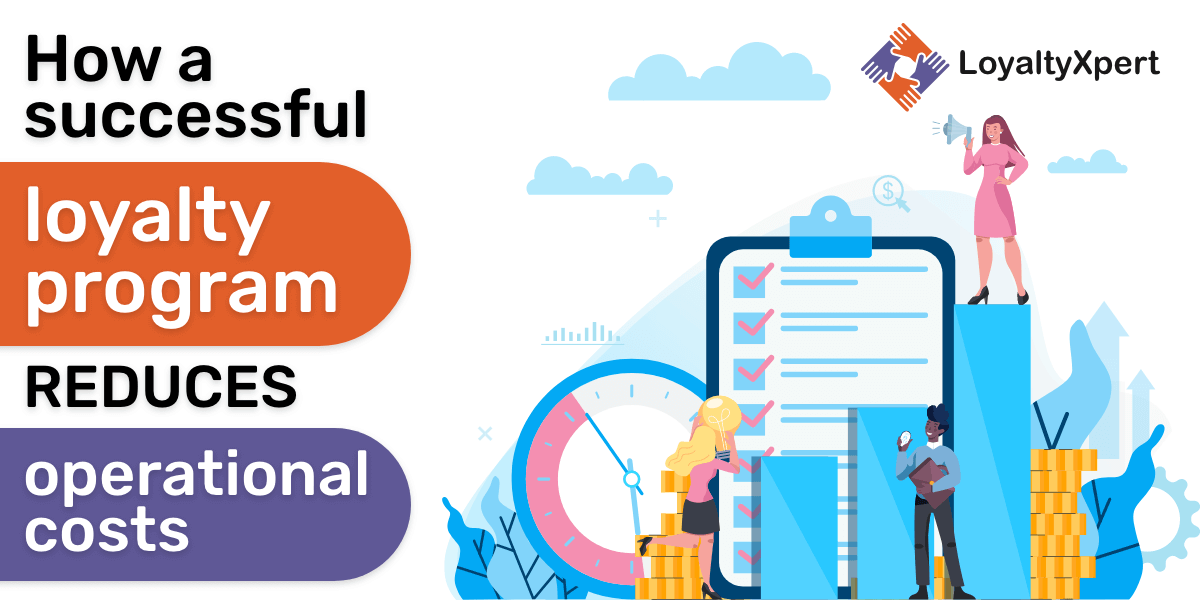CONTENT
Several studies have highlighted how consumers did not hesitate to try products from different brands during the COVID-19 pandemic-related lockdowns.
Thus, in this fierce competition era, maintaining a long-lasting relationship with consumers is crucial for every business. And this is where loyalty programs come into the picture.
5 Ways a Loyalty Program Reduces Operational Costs
Here are some of the ways that a loyalty program can help you reduce operational costs:
1. Benefits that businesses can expect
When it comes to the list of loyalty programs’ pros and cons, an increase in APRU, referral traffic, higher average order value & order frequency are some benefits.
Besides the enrollment fees, customers need to make a minimum purchase to start generating benefits. Thus, the average order value increases. More orders from customers increase the average revenue per user. Companies that run such programs often see a spike in referral traffic from websites with content mentioning the rewards and incentive details.
2. Brands can reduce marketing spend for a while
Loyalty programs with a precise strategy designed after careful analysis can help in improving the repeat purchase rate. Buyers appreciate being rewarded for their continual business. With loyal consumers who buy frequently, companies can reduce their marketing spend for a while.
3. Focusing more on improving repeat purchase rate rather than spending on marketing
Successful businesses often manage to keep the repeat purchase rate between 20 and 40%. If an online seller convinces 20 to 30% of consumers to buy something every month, the firm can do pretty well. Companies with a repeat purchase rate of less than 20% often find it tough to survive longer.
Online sellers worldwide dedicate a large chunk of their budget to marketing efforts to acquire first-time buyers. However, the crucial point is that roughly 40% of the digital store’s overall business comes from just 8% of the customer base.
It makes sense if a newly launched e-commerce firm spends handsomely to attract new buyers on board for growth. But, established ones can benefit more by focusing on customer retention and improving their repeat purchases. Loyalty programs play a critical role in enhancing repeat purchases.
4. Loyalty programs motivate consumers to spend more
Such initiatives are a win-win situation for both. Customers can save money on purchases and earn perks, and incentives, while businesses, on the other hand, earn more from consumers enrolled in loyalty programs. With exciting rewards, firms can keep customers engaged.
Multi-tier loyalty programs that divide customers into different tiers can influence purchase behaviour. Buyers spend more to attain points, reach the next level, and gain access to benefits.
5. A successful loyalty program can directly influence support costs
An existing loyal customer already knows almost everything about the firm’s products and services. So, they won’t contact the customer service or support team unless too necessary to do so. On the other hand, most new customers require assistance during their first few months on board. Put simply, retaining existing customers with the help of loyalty programs also helps in reducing support costs.
6. Marketing and rewards initiatives must go hand in hand
Loyalty programs can undoubtedly reduce the necessity of spending on marketing. However, marketing campaigns play a crucial role in ensuring that people do not forget the brand in the noise. Without social media marketing strategies, customer retention may become challenging.
Continuous branding with tools like content marketing can help to maintain loyalty. Well-researched and engaging content on social networking sites can ensure consumers remain well aware-of new products and services.
Thus, Facebook ads, Google AdWords, email marketing, guest blogging, and other marketing forms need to be continued on an ongoing basis.
Keeping an eye on the competition and offering the best service to consumers via loyalty programs can ensure your brand remains ahead in the competitive scenario.
How to Calculate the Costs of a Loyalty Program
Any rewards program’s effectiveness can be judged based on aspects like positive reviews from consumers, direct website visits, social shares, and backlinks.
Every program has a different structure and incentives; thus, calculating the net gain and cost for a loyalty program can be tricky. Finance firm PWC’s calculation is perhaps one of the most logical ones: “The cost for a loyalty program can be derived by subtracting incremental costs from incremental revenues.”
An increase in referral rates lowered consumer churn percentage, a rise in the number of consumers willing to pay a premium, increased purchase frequency, and ancillary revenue in the form of membership fees are incremental gains.
On the other hand, incremental cost includes IT investment, business overhead costs, R & D costs, expenses incurred for offering perks, soft benefits, and conducting member events.
Digital Platforms for Loyalty Program Management:
Small and large brands often find it challenging to keep up with ever-changing consumer needs. Thankfully, agencies like LoyaltyXpert can assist in designing, categorizing, deploying, and monitoring the performance of loyalty programs. We offer flexibility when it comes to designing rewards programs. The digital Loyalty management platform helps in tracking behaviours, user preferences, and current trends.
Clients can use an integrated mobile app to keep track of performance and ensure complete control. If you plan to improve customer retention with a rewards strategy, you should consider discussing your plans with the team at
LoyaltyXpert or request a FREE demo. The firm has developed solutions for clients from multiple sectors based in various countries around the world.
See how a smart loyalty program can boost your sales.
Get a free demo and discover how to drive loyalty with ease.
FAQs
Ajay Pareek
President of Sales - LoyaltyXpert
Ajay Pareek is a seasoned Sales leader with over 30 years of experience in building and scaling B2B digital platforms. His expertise lies in crafting innovative solutions for channel engagement, loyalty programs, and comprehensive sales management. Ajay has been instrumental in driving substantial growth and profitability for the company through his strategic leadership.




